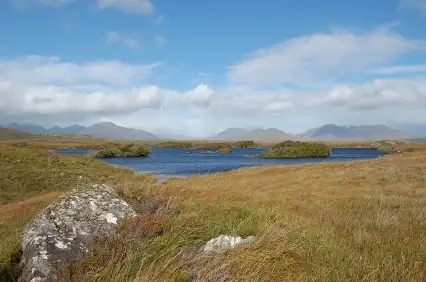
Many travelers avoid eco-friendly travel, thinking it’s more expensive to go green on the road. You could believe this myth, or you could make a few simple switches to how you travel that make a big difference to the environment—and your wallet.
I also asked Chris Lane, vice president of environmental affairs for Xanterra Parks and Resorts, for his advice, and compiled tips from our own readers, who are already taking small steps toward traveling green.
1. Eco-Proof Your Home
Adjust your water heater to its lowest setting, turn off any running appliances, and unplug all electronics to save energy and reduce your bill. Lamps, televisions, toasters, computers, and even your cell phone charger continue to use power even when they aren’t in use. Additionally, to save trees, suspend daily newspaper service for the duration of your trip (will you really read last Tuesday’s headlines?).
National Geographic’s Green Guide is a great resource for living green at home and on the go.
2. Use Greener Transportation (And Offset Your Carbon Footprint)
Lane recommends that people consider trains, as they “tend to be pretty efficient as far as energy per passenger, [though] they take time.” Inevitably, trains, planes, and automobiles all emit carbon. “You can reduce it, but you can’t get around it,” notes Lane.
When you do fly, opt for nonstop rather than connecting flights, as the majority of fuel use occurs during takeoff and landing. Nonstops are often more expensive than connecting flights, but as SmarterTravel reader and connection-phobe lawthomas points out, “My time, comfort, and sanity are far more important than a few dollars saved.”
Although not perfect, carbon offsets are a quick way to mitigate the impact of travel. Several European airports, as well as San Francisco International, have made it easy for travelers by conveniently selling offsets at airport kiosks. Additionally, numerous airlines sell them during the booking process.
3. Walk, Bike, or Use Public Transportation
Using public transportation is an easy (and cheap) way to experience a destination like a local. “Buses and shuttles, especially if they are alternatively fueled or electric vehicles, are very green,” says Lane. Many cities even offer bicycles for rent. Nothing, however, beats walking. No matter what, you’ll save money not having to purchase gasoline.
Sometimes it’s unrealistic, if not impossible, to get around without a car. In that case, consider renting a hybrid or other fuel-efficient car. Some hotels, such as Kimpton, offer discounts if you’re driving a gas sipper. All of Budget‘s rentals in the economy, compact, and intermediate classes are SmartWay Certified, meaning they are fuel efficient and better environmental performers compared to other vehicles. Avis also offers green driving tips.
4. Choose Eco-Friendly Destinations
Look for destinations that make preservation and sustainability a priority. Certain locations, such as Alaska, Costa Rica, South Africa, U.S. National Parks, Belize, and Maho Bay on St. John in the U.S. Virgin Islands, have more to offer environmentally aware travelers.
Another option is to go local. “You can purposely choose to vacation closer to where you live. It’s not unreasonable,” suggests Lane, though he notes it’s a tough choice to take a regional vacation over an international trip.
For more environmentally friendly destinations, check out our list of Earth Day deals or visit the Mother Nature Network each week for a new eco-friendly destination. If you’ve got a destination in mind, see how it rates according to National Geographic’s Center for Sustainable Destinations.
5. Go Digital
Being green doesn’t have to be a hassle. Several airlines are now allowing travelers to flash their boarding pass on a smartphone, saving paper and time.
Also, nix travel guides and photocopies of important documents. Reader italytraveler2K recommends taking photos: “I take photos of my passport, IDs, etc., as well as maps, book pages, and subway maps in the station.”
Likewise, Kamron5854 scans important documents to the home computer, saying, “If [you] lose anything, just pop into an Internet cafe and log on to your home computer and there is everything you need,” while reader Polder opts to send similar information via email.
For destination information, look for paper-free guidebooks and travel podcasts.
6. Pack Light
The lighter you pack, the fewer resources you burn transporting your goods, and the more money you save by avoiding baggage fees. Taking fewer bags, and fewer items in your bags, means the airplane (or car, or train) is lighter and more efficient. Don’t forget to throw a reusable water bottle and reusable shopping bags for souvenirs in your suitcase.
Considering what pants and shirts you can reuse during your trip can help you lighten your load as well. Remember, you can always wash items in a sink if needed.
7. Stay at Green Hotels
With many hotels claiming to be green, it’s important to know there’s a wide range of what is considered “green.” Lane suggests travelers look for third party certifications such as ISO 14001, Green Key, Green Globe, LEED building certification, and state certification programs.
“The problem with all of those is not one can guarantee deep green,” Lane explains. “Just because a hotel recycles doesn’t mean it’s green. Whether they recycle well tells you if they are green.”
Also look at what kinds of products are used to clean the hotel rooms. “The last thing you want when going into a hotel room is toxic chemicals, [including] in the bathtub—who wants that on their skin?” Lane suggests checking for Green Seal-certified cleaners. “They’re biodegradable, completely healthy, and not going to hurt you in any way. It’s not only about the environment, but guest health safety.”
He also recommends asking questions. “The number one thing you can do is talk to the management: ‘Are you green? How are you green? Explain it to me.’ If they can’t do it, then chances are they aren’t green.”
Don’t overlook smaller properties such as bed and breakfasts. “The bulk of major hotel chains are woefully deficient in performance. They’ve taken significant steps to green operations, but [the changes] are too small,” Lane explains. “With thousands of properties around the world, and political, climatic, and economic barriers … it’s hard to change, almost impossible. The little guys can make drastic changes fast, and they are.”
For those that enjoy the outdoors, camping is often free or relatively inexpensive and perhaps the greenest lodging option. To find accommodations, look to Green Vacation Hub and Environmentally Friendly Hotels. The sites list hotels in several locations, detailing which ways the properties are eco-aware.
8. Re-Use Your Towels and Sheets
Many hotels give guests the option of reusing their towels and sheets rather than having them changed daily, thereby reducing the loads of laundry the hotel has to do, saving water and energy. To ensure you reuse the same linens, hang the “do not disturb” sign on your door.
9. Travel With Reusable Bottles
Pack your own soap, shampoo, lotion, and other products in reusable 3-1-1-compliant bottles so you don’t have to use the hotel toiletries. This will prevent a bunch of plastic bottles from landing in the trash after your visit. If you forget to pack something and have to use the hotel’s offerings, consider taking the empty bottles home and using them on your next trip by refilling them with your own products.
Another way to pack light and get around the 3-1-1 rule is to use non-liquid toiletries. These products take up little space and use minimal packaging.
10. Eat Local
“Wherever you are traveling, you should be eating the food that is where you are,” says Lane. “You shouldn’t be eating food from 5,000 miles [away].” It might be tempting to grab a familiar meal at a chain restaurant, but these establishments tend to use preservatives and waste more fuel, shipping and packing materials, and energy getting their food.
Instead, spend mealtime at local, independently owned restaurants. “Choose the right foods and you won’t spend more money,” advises Lane. “They also tend to be healthier and taste better.” Look for products that are organic, free trade, and all natural, as well as pesticide-, antibiotic-, and hormone-free. “Customers, unfortunately, have to do their homework,” says Lane. “They do their homework on the fun side of it; [they] might as well do it on the educational side.”
Your Turn
How do you travel green? What ways do you save with eco-friendly travel? Share your thoughts and advice by submitting a comment below!
We hand-pick everything we recommend and select items through testing and reviews. Some products are sent to us free of charge with no incentive to offer a favorable review. We offer our unbiased opinions and do not accept compensation to review products. All items are in stock and prices are accurate at the time of publication. If you buy something through our links, we may earn a commission.
Related
Top Fares From
Today's Top Travel Deals
Brought to you by ShermansTravel
France: 8-Night Paris, Avignon & Nice...
Infinity Worldwide Vacations
 vacation
$2880+
vacation
$2880+
Poconos: 3 Nts in Garden of...
ResortsAndLodges.com
 hotel
$305+
hotel
$305+
7-Nt Canada & New England Cruise,...
Princess Cruises
 cruise
$839+
cruise
$839+



